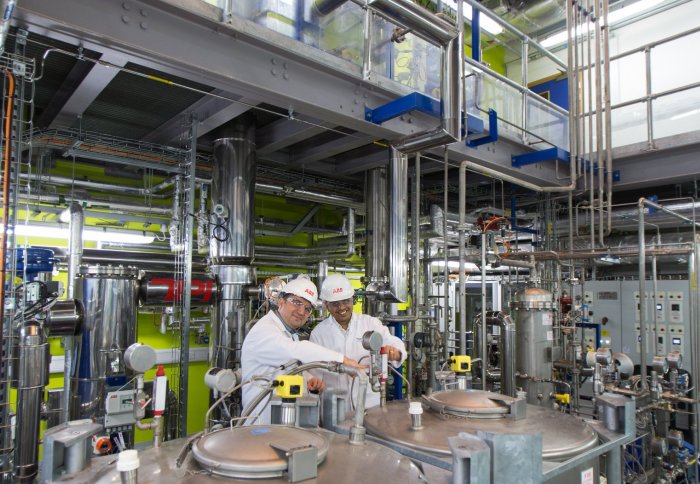
Excerpts from a talk by Michael Noble on March 2, 2020, at the Minnesota Carbon Capture Forum hosted by Center for Energy and Environment, Great Plains Institute, Conservation Minnesota, Laborers’ International Union of North America, and Fresh Energy at the Minnesota History Center.
It has been more than four years since 197 nations gathered in Paris and agreed it was time to get serious about climate change. These nations concurred that we should do everything possible to prevent the world from warming more than 1.5 degrees Celsius, and in no case should it warm more than 2 degrees.
To keep warming to 1.5 degrees means we need to reduce global emissions by 45 percent by 2030 and cut them to net-zero by mid-century. Net-zero emissions (or net carbon-neutral) by mid-century is not only broadly agreed upon by scientists, but increasingly embraced by informed policy makers such as both of Minnesota’s U.S. senators, investors, electric utilities serving Minnesota, and some of the most admired Fortune 500 companies, including 3M and Ecolab located right here.
To reach this net-zero emissions goal, we need carbon-free energy solutions for the entire economy of the world—not just advanced economies. And we need them for challenging industries like agriculture, heavy manufacturing, and air travel—not just electricity and cars and buildings.
There’s been global consensus to start with the power sector, an area where Fresh Energy has played a key role in Minnesota, where renewable energy options are cheaper than coal. Decarbonizing the electric system, as challenging as it is, is actually the easiest part of this puzzle because cheap renewables are putting tremendous economic pressure on coal and falling storage costs are making natural gas power plants risky investments.
Researchers modeling the electric grid estimate that, with current technology, at least 80 percent of our electric supply can be renewable energy, affordably and reliably. But we need to get to 100 percent carbon-free and to do that we need more tools in the toolbox – including carbon capture from coal and gas plants to utilize and store.
Carbon capture, utilization, and storage is an emissions reduction process that captures carbon dioxide from sources like coal and gas plants and either reuses or stores it so it will not enter the atmosphere.
Eventually, we’ll be faced with weighing carbon capture with fossil fuels against methods like fourth generation nuclear power, keeping existing reactors open longer, or massive new imports of Canadian hydropower as possible solutions to get us all the way to 100% clean electricity. But for now, we should keep carbon capture power plants capable of reducing emissions by 90-95 percent as one tool in the toolbox.
We’ll need other carbon capture and management tools as well for other aspects of the net-zero carbon economy we’re striving toward. Tools to:
- Remove carbon dioxide from the sky at scale. We need to learn additional ways to achieve this. Currently, biological systems for carbon dioxide removal are effective; they’re also cheaper and offer co-benefits like healthy soils and healthy forests. However, there is an upper limit potential for nature’s ways of carbon sequestration. This means we need engineering methods as well to draw down carbon dioxide from the sky.
- Subsidize and invest in discovering what role carbon capture will play in taking the economy to 100 percent carbon-free electricity, as well as 100 percent of all energy. An example of this is the 45Q Federal Tax Credit for carbon capture projects. In 2018, to advance various related industries of carbon engineering and carbon management, Congress put a sliding scale price on capturing carbon dioxide. The biggest incentive was for pulling it out of the sky and either burying it underground or making it into useful products—$50 per ton of carbon dioxide. This tax credit is called 45Q and had bipartisan support. It is a necessary response from our federal government to put yet another tool in the climate solutions toolbox—using public funds to jumpstart 50-80 different projects in carbon management over the coming years.
Countries around the world are looking to the United States for engineering and technology leadership in the critical area of carbon capture. The federal government must expand its support for carbon utilization programs that demonstrate novel uses for carbon dioxide in commercial and industrial products.
At Fresh Energy, we believe that it’s past time for climate action and building a prosperous and equitable world that’s carbon-neutral requires all the tools in our toolbox. Our mission is to shape and drive realistic, visionary energy policies that benefit all, and we believe that responsible carbon capture can be a tool for a net carbon-neutral economy.
